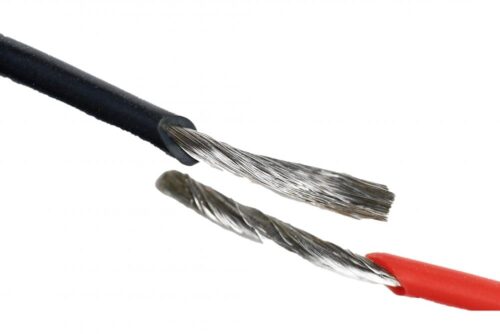Subwoofer Wire Diagram

Subwoofer Wiring Guide – Optimize Your Car Audio Setup
Achieving powerful, distortion-free bass starts with the right subwoofer wiring configuration. Wiring is crucial in impedance matching, amplifier performance, and sound output, whether running a single subwoofer or a multi-subwoofer setup.
Understanding series vs. parallel wiring, single vs. dual voice coil configurations, and ohm load calculations will help you get the deep, rich bass you expect from your subwoofers while protecting your amplifier from damage.

Choosing the Right Subwoofer Wiring Configuration
Before wiring your subwoofer, it's essential to determine:
- Voice Coil Type: Are you working with a single voice coil (SVC) or a dual voice coil (DVC) subwoofer?
- Amplifier Stability: What ohm loads can your amplifier handle?
- Number of Subwoofers: Are you wiring one, two, or multiple subwoofers?
Series vs. Parallel Subwoofer Wiring – What’s the Difference?
The way your subwoofers are wired will determine the total impedance load (ohms) on the amplifier:
- Series Wiring – Increases the total impedance (ohms) by adding the values of each subwoofer's coil. This results in less power from the amplifier but can improve sound clarity.
- Parallel Wiring – Lowers the total impedance (ohms) by splitting the load across all voice coils. This allows more power from the amplifier, but your system must be stable at a lower ohm load.
The right wiring method balances power, efficiency, and amplifier longevity.
Subwoofer Wiring Diagrams & Impedance Matching
Single Woofer, Series Wiring
Connecting the two voice coils of the sub in series (+ to -) will score the following impedances:
Dual 4Ω Subwoofer: 8 Ohms
Dual 2Ω Subwoofer: 4 Ohms

Single Woofer, Parallel Wiring
Connecting the two voice coils of the sub in parallel (+ to +, – to -) will score the following impedances:
Dual 4Ω Subwoofer: 2 Ohms
Dual 2Ω Subwoofer: 1 Ohms

Dual Woofers, Series Wiring
Connecting the two voice coils of each sub in series (+ to -) and the subs themselves in parallel will score the following impedances:
(2) Dual 4Ω Subwoofers: 4 Ohm
(2) Dual 2Ω Subwoofers: 2 Ohm

Dual Woofers, Parallel Wiring
Connecting the two voice coils of each sub in parallel (+ to +, – to -) and the subs themselves in parallel will score the following impedances:
(2) Dual 4Ω Subwoofers: 1 Ohm
(2) Dual 2Ω Subwoofers: .5 Ohm

Three Woofers, Series Wiring
Connecting the two voice coils of each sub in series (+ to -) and the subs themselves in parallel will score the following impedances:
(3) Dual 4Ω Subwoofers: 2.67 Ohm
(3) Dual 2Ω Subwoofers: 1.33 Ohm

Three Woofers, Parallel Wiring
Connecting the two voice coils of each sub in parallel (+ to +, – to -) and the subs themselves in parallel will score the following impedances:
(3) Dual 4Ω Subwoofers: .67 Ohm (Find a .5Ω Stable Amplifier)
(3) Dual 2Ω Subwoofers: .33 Ohm (Ugh, Do Not Pass Go…)

Why Proper Subwoofer Wiring Matters?
- Protects Your Amplifier – Ensures the total impedance load matches the amplifier’s stability rating.
- Maximizes Power Output – Correct wiring allows the amplifier to deliver the most power without overheating or shutting down.
- Enhances Sound Quality – Eliminates distortion, clipping, and poor bass response caused by incorrect wiring.
- Prevents Equipment Damage – Wiring errors can lead to burned coils, amplifier failure, or excessive electrical draw.
Following the correct subwoofer wiring diagrams ensures a long-lasting, high-performance car audio system.
Achieve Maximum Bass Performance with the Right Wiring
Proper subwoofer wiring is the foundation of a high-performance car audio system. Whether building a competition-level setup or upgrading your factory system, ensuring the correct wiring, impedance matching, and amplifier pairing will result in powerful, distortion-free bass.
Follow the correct wiring configurations to protect your equipment, optimize power distribution, and unleash deep, impactful bass in your vehicle.
Need More Help?
Refer to Soundstream’s official subwoofer wiring diagrams to find the perfect setup for your system.

